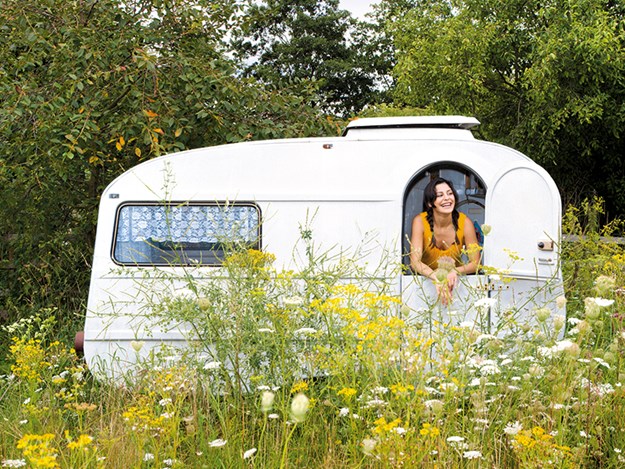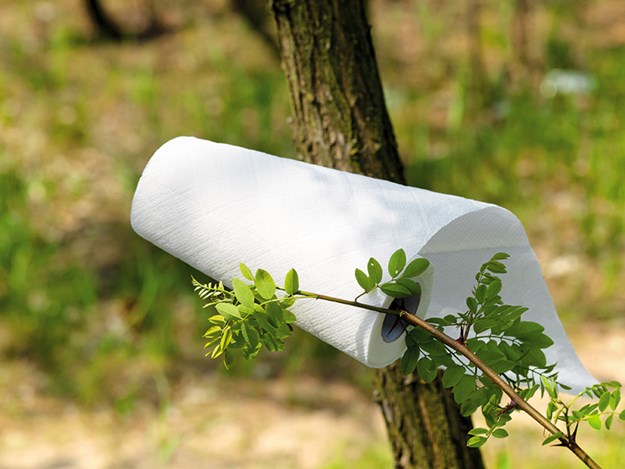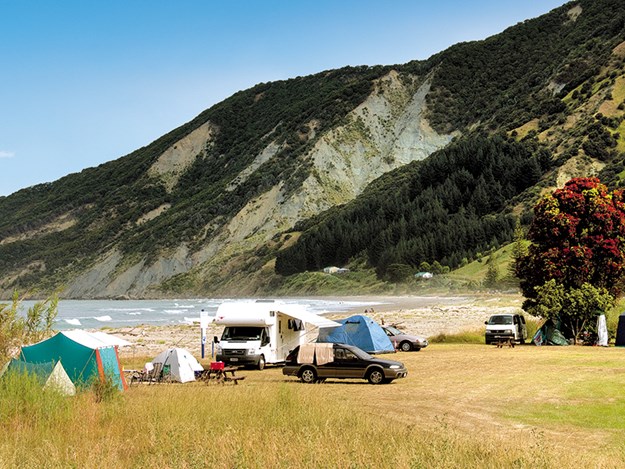
In simple terms, freedom camping is precisely what the name suggests: camping in places where you don’t have to pay.
Just a few decades ago, freedom camping in New Zealand was allowed and common in a wide range of areas, and there were few rules. However, a surge in the number of campers and ever-growing pressure from locals and freedom camping opponents has led to more restrictions and regulations. Today, it’s often no longer as easy as saying, “we like it here, so let’s stay”.
The good news is that freedom camping is still very much possible in New Zealand. However, knowing the rules and where to go can make the whole experience a lot more enjoyable for everyone.

Where is freedom camping allowed?
According to the website govt.nz, “you can freedom camp on DOC (Department of Conservation) and local council land”. However, before you get too excited, know that the rules are not quite that simple.
Individual councils can restrict freedom camping in their areas through bylaws – and most do. That means there are often areas close to towns where freedom camping isn’t allowed, and in other places it’s restricted to short stays.
Freedom camping on DOC land is generally allowed. However, there are some places where it is restricted, usually because the site has a unique value, for example, it’s a Māori burial site (urupa) or a protected plant or animal is there. In other cases, you’ll find official campsites on DOC land where you have to pay to stay. As a general rule, if you’re on DOC land and there is no signage restricting camping and no campground that requires payment, you’re usually allowed to freedom camp.
What is the easiest way to find free campsites?
The best way to find out what is permitted in a given area is to check with the local council. Give them a call, check their website or call in at an information centre.
There are also a number of useful mobile apps such as CamperMate, Rankers Camping NZ and the NZMCA Travel app (for members only). All of these apps show free sites in specific colours, and you can filter for them.
NZMCA members also get a printed book that lists all camps across the country – including the free ones. These are sites that are officially designated as freedom campsites by the local councils and DOC.
It’s always worth checking the comments in the mobile apps to find out if others have enjoyed the spot or if there have been any issues, as some sites are also popular with locals for late-night parties.
If you’re not keen on the idea of using a mobile app, the next best way to find out about these sites is via the individual councils. Many have them on their websites, and a Google search can find them.
Another option would be to stop at the tourist information office and ask the staff.
 |
|
In New Zealand, we’re lucky to have freedom camping sites in amazing locations like Tokomaru Bay
|
What are the official rules when freedom camping?
Once you have found a spot where freedom camping is allowed, there are a couple of rules you should know about. The first one should go without saying, but it is so important it’s worth another mention: Leave nothing behind!
One of the reasons more and more freedom campsites get closed is because locals complain about rubbish and human waste left behind. While it is debatable how much of that is actually caused by freedom campers versus day visitors, we all have a responsibility to keep our country clean. So make sure you take all your rubbish and don’t do your ‘business’ in the bushes.
Another thing to be aware of is that many freedom camping sites have individual rules, mainly about where exactly you can park and how long you can stay. It’s important to know that just because an area is marked as a freedom campsite, it does not mean we can park anywhere. Often, there is a specific area within the reserve or car park that’s designated for campers. Usually, you will find signs at the entrance or by the facilities that outline exactly where to park and how long you can stay.
Finally, it’s worth noting that freedom camping is generally only allowed in self-contained vehicles. In many places, the official self-containment certification is required.
 |
|
Being mindful of noise is an unspoken rule of freedom camping
|
What unofficial rules should we know about?
Freedom camping – especially on the designated sites – is generally a community activity. It’s rare not to have neighbours. As such, being considerate, respectful, and tolerant are key. We asked some seasoned freedom campers what they think the ‘unofficial’ rules are to ensure a great experience for everyone.
Probably not surprisingly, the unofficial rule that was mentioned the most is what’s already included in the official rules: Don’t leave anything but footprint and tyre marks behind.
Here are some other comments:
- Don’t squeeze in unless you have to. Most campers like a little privacy, so if you can park a bit further away do so, even if it means you won’t have the best views.
- Having said this, don’t take up more space than you have to. While we all like a bit of room to spread out, it’s also important to be considerate and allow space for others in busy areas.
- Caravan owners and those who tow cars behind their motorhomes and buses should be considerate when parking the vehicle. Don’t take up a designated freedom camping spot for your car if there are only a few.
- Be considerate with noise. Not everyone likes your kind of music, wants to listen to your television programme, or enjoys the sound of your sliding door opening and closing every five minutes. This is particularly important at night but it applies during the day as well.
- Be tolerant and positive. If another camper is doing something that bothers you, go over with a smile and politely ask whether there is a compromise that works for both of you.
- Don’t steal someone’s view.
- If you see rubbish somewhere, pick it up, even if it’s not yours. We all play a part in keeping New Zealand clean and green.
- Be friendly and say hello to your neighbours.
- And most importantly, be respectful of the land, the people who look after it, fellow campers and other visitors.
What to expect from freedom camping sites:
It’s important to approach freedom camping with the right attitude and expectations. The majority of free sites have very basic facilities – if any. Some areas have a toilet, but that’s about it. And you never know how clean that toilet will be. The general expectation is that freedom campers will be fully self-contained and don’t need any facilities. So it’s best to come with that expectation and then be positively surprised should more happen to be available.
Another eventuality to be prepared for is that many free camps have uneven ground – whether it’s bumpy reserves or carparks that are not entirely level. So bring your levellers.
What freedom camping sites are recommended?
Not all free campsites are the same, of course. Some are mainly just good for one-night stopovers while others are in beautiful locations with plenty to do in the area. The following are the freedom camping sites that come most highly recommended by New Zealand travellers.
- Ramp Road, Tokerau Beach – ultimate beachfront parking and lots of space.
- Ngawi, Cape Palliser – ocean front, close to the lighthouse and seal colony, and on a clear day you can see the South Island.
- Lake Pukaki carpark – the view up the lake to Mount Cook is outstanding.
- Lake Ruataniwha (west end), Mackenzie Basin – stunning views and a massive amount of room to park up.
- Gabriels Gully, Otago – a beautiful remote spot with a great hiking trail nearby.
- Waihao Box, South Canterbury – another place with stunning scenery and a good amount of space.
- Waiponga Reserve, Coromandel – A quiet, peaceful place with a stunning beach a ve-minute walk away.
- Clifton Road Reserve, Hawke’s Bay – Parking right beside the ocean and a great fish and chip shop across the road.
These are just some of the amazing freedom camping spots we get to enjoy. There are many more, so get out there and explore for yourself.
Where to learn more:
- The official government guidelines on freedom camping: govt.nz/browse/recreation-and-the-environment/freedom-camping
- General information and links to council websites with region-specific information freedomcamping.org/plan-your-trip/how-to-camp
- DOC areas where freedom camping is prohibited or restricted doc.govt.nz/parks-and-recreation/places-to-stay/stay-at-a-campsite/freedom-camping/prohibited-conservation-areas





